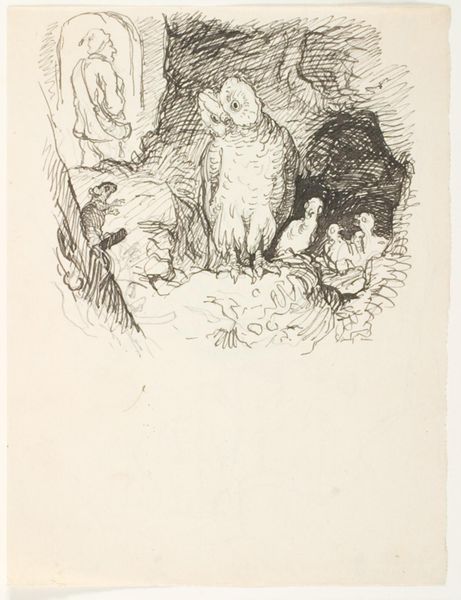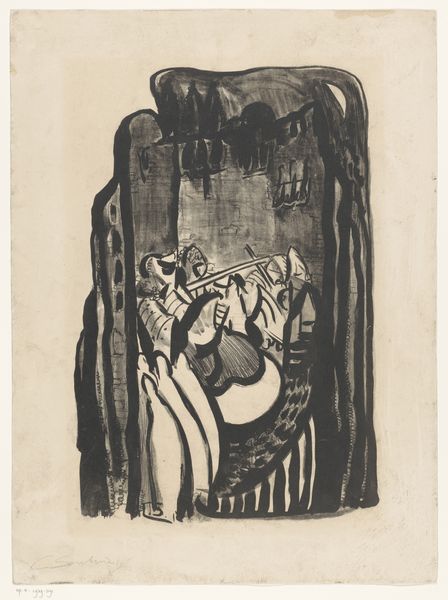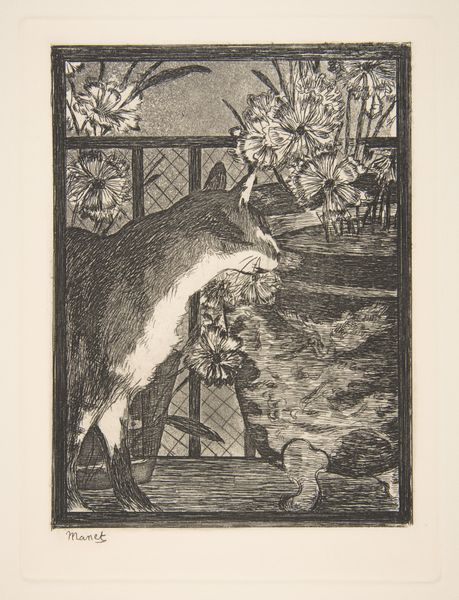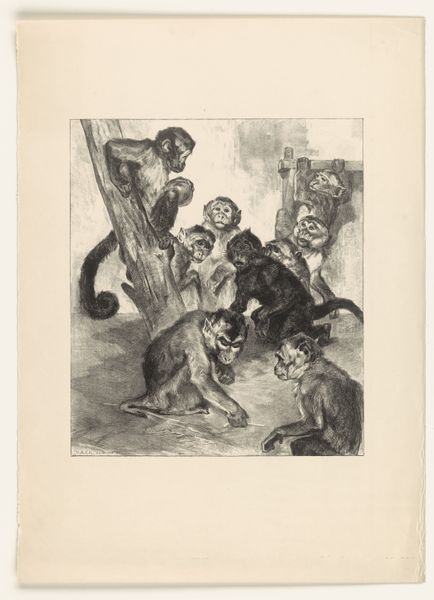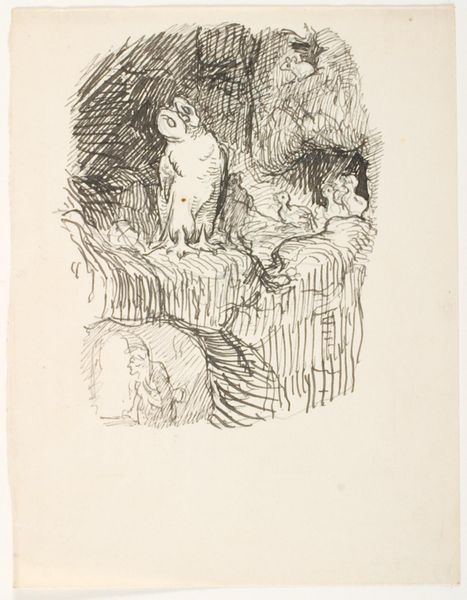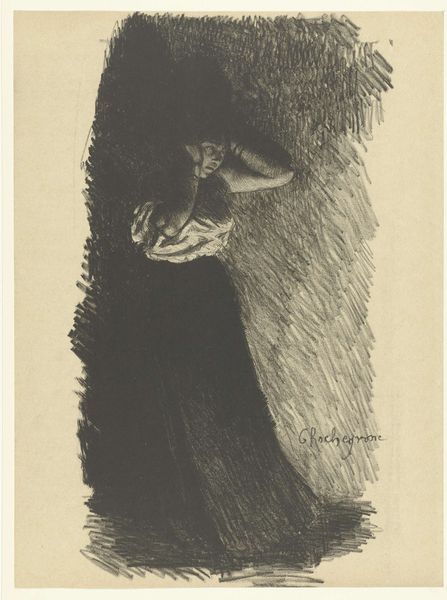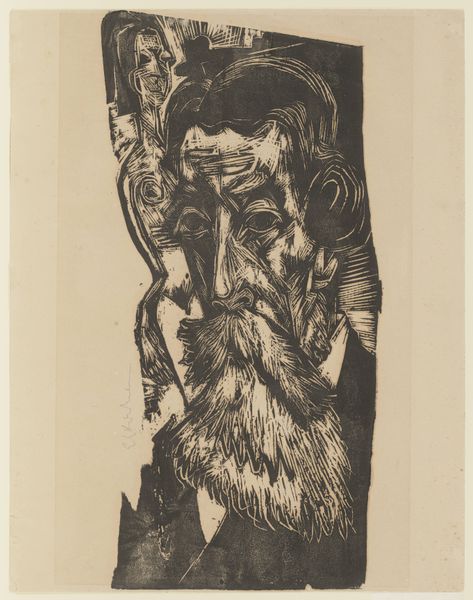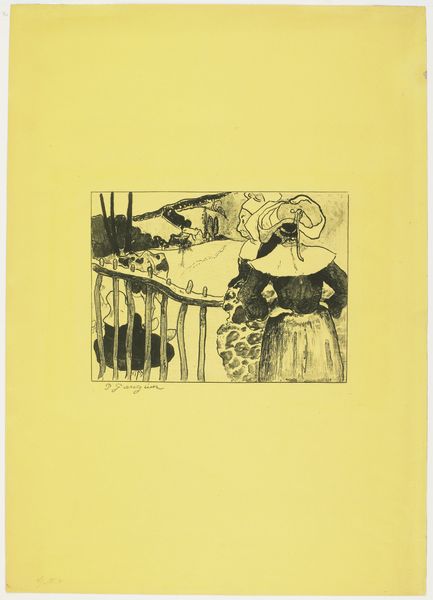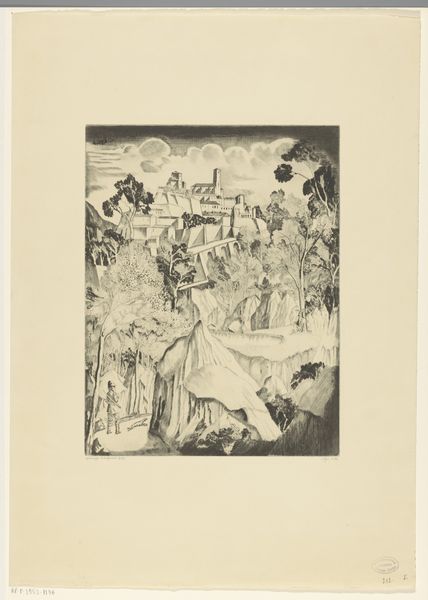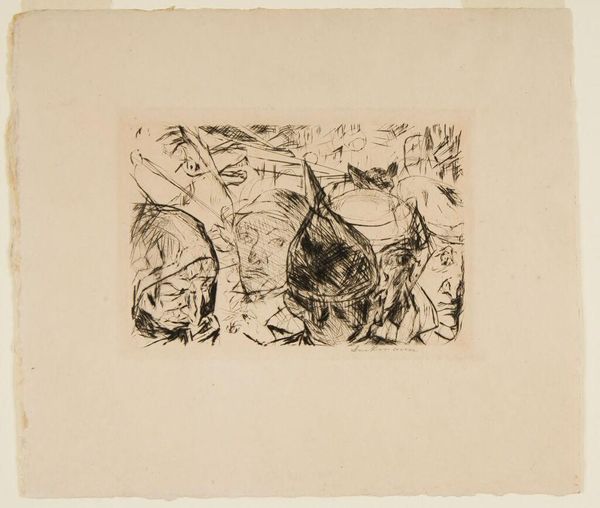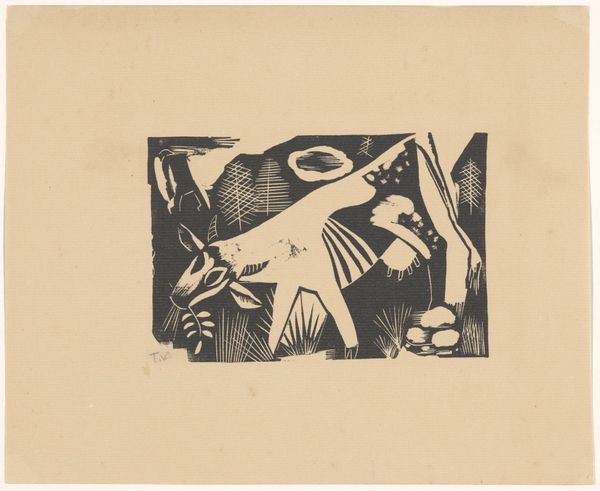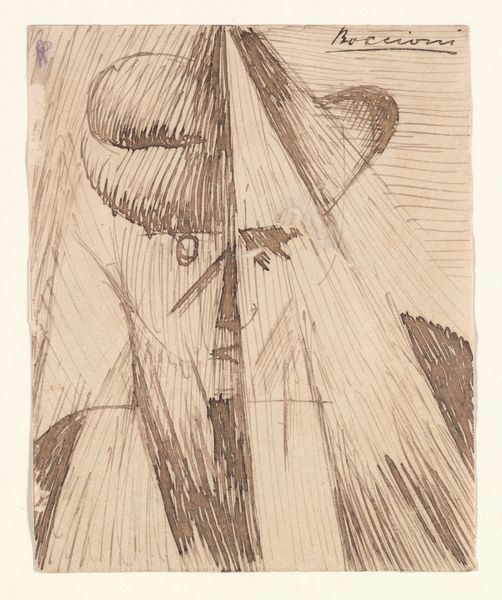
drawing, print
#
pencil drawn
#
drawing
#
amateur sketch
#
toned paper
#
light pencil work
#
ink painting
# print
#
pencil sketch
#
incomplete sketchy
#
pen-ink sketch
#
mixed medium
#
watercolor
Dimensions: plate: 9 1/4 x 6 1/8in. (23.5 x 15.6cm) sheet: 14 1/2 x 9 1/2in. (36.8 x 24.1cm)
Copyright: Public Domain
Curator: Edouard Manet's print, "Line in front of the Butcher Shop," created circa 1870, captures a slice of Parisian life during a tumultuous period. Editor: My immediate impression is how wonderfully it evokes a sense of quiet desperation. The somber tonality of the print, the hunched figures… it speaks of hardship, yet there's also a remarkable formal harmony. Curator: Indeed. The composition itself tells a story. Look at the use of hatching and cross-hatching to delineate form and create areas of shadow. Manet's marks almost vibrate. This work’s creation corresponds with the Franco-Prussian War, which led to shortages, inflation and widespread poverty throughout Paris. Lines in front of shops grew, with people lining up for scarce supplies. This everyday, lived reality for so many becomes Manet's subject. Editor: The umbrella motif is quite striking. Each one is rendered distinctively, contributing to the overall rhythm. I can't help but consider how those parasols act as shielding canopies, both protecting from the weather and obscuring individuality. The figures become anonymized en masse. Curator: The printmaking process itself becomes integral to the work's meaning. Its accessibility made it ideal for circulating images to a broader public, thus influencing contemporary discourse and even acting as propaganda, documenting material conditions and also perhaps swaying public sentiment. The lines in the image echo the material reality. Editor: You’re spot on. Form and content fuse seamlessly, enhancing the piece's semiotic resonance. The butcher shop, indicated in the top of the print, acts as a bleak reminder of the basics of survival. Its stark geometry sharply contrasts against the curved lines of the human subjects. Curator: The etching, being a medium easily reproduced, meant Manet's observations of daily Parisian life reached a larger audience, providing a counterpoint to the more celebratory depictions favored by official artistic institutions during that time. This also marks a moment when fine art processes start to become aligned to commercial forms of labor. Editor: So, the image invites one to decode not only the social commentary embedded but also the artist's profound awareness of the formal language he employs, to create a piece both aesthetically compelling and thought-provoking. Curator: It gives a renewed appreciation of how artworks are a convergence of material forces and aesthetic decisions. Editor: A profound reflection, bridging aesthetic evaluation and historical circumstance.
Comments
No comments
Be the first to comment and join the conversation on the ultimate creative platform.
